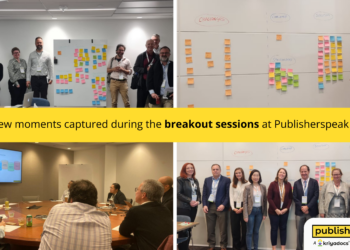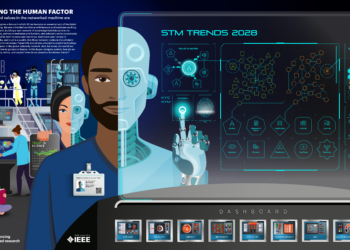It can be argued that in the not-too-distant past, resources were scarce, and libraries were one of the only sources of trustworthy information. Users were obliged to conform to library practices and standards in order to successfully meet their information needs. Now, users’ time and attention are scarce, while resources are abundant . . .
So begins a paper by Connaway, Dickey, and Radford entitled, “‘If It Is Too Inconvenient, I’m Not Going After It:’ Convenience as a Critical Factor in Information-seeking Behaviors.” The bottom-line message is clear — if people can’t find something quickly, they’ll either give up or settle for something perhaps of lower quality.
The researchers performed a number of iterative approaches to generate their data, including a “sense-making” phase in which they zeroed-in on what “convenience” means to an information seeker. Not surprisingly, ease of access and time spent were the major determinants of convenience. Finding ways around the physical inconvenience of securing print copies of journals was one priority, for instance.
In one quote that will send a chill through any traditionalist, the authors of one cited paper write:
“Wikipedia meets the needs of college students because it offers a mixture of coverage, currency, convenience, and comprehensibility in a world where credibility is less of a given or an expectation from today’s students.” (Head and Eisenberg, 2010)
The researchers included online surveys, individual interviews, semi-structured interviews, another online survey, and telephone interviews. All this work was gathered through two studies, which the current paper pulls together. The researchers state:
. . . empirical data identifies convenience as central to information-seeking behaviors. The centrality of convenience is especially prevalent among the millenial subjects in both studies, but is true across all demographic categories — age, gender, academic role . . .
Users are ultimately “satisficing,” which is defined by other researchers as “a judgment that the information is good enough to satisfy a need.” With information abundant, and time and attention scarce, there are many more opportunities and motivations for satisficing.
In an essay on his blog, David Worlock hits on a similar theme in talking about business-to-business (B2B) publishing in what he terms the post-modern world. You can hear the hoofbeats of convenience in every bullet point he offers:
- there would be a diminishing emphasis on content , its ownership and proprietary nature
- the asset would become the understanding of customer needs, and turning that into trust and authority by virtue of satisfying those needs with solutions that satisfied my mantra: productivity gain , decision-making enhancement, and compliance management
- the business model would change in line with this, and settle around service contracts and content rental
- users would stop being researchers and start being fully informed participants in workflow and process
- and in order to make this happen, those who had formerly fought to the death about content ownership would cross license content to each others’ solutions, co-market solutions around shared content, enter into lifetime rental arrangements with users and generally behave in an almost exactly opposite manner to the way they have generally behaved for the last 40 years
It’s almost axiomatic that publishers own the content they publish. Yet, at last week’s SSP Annual Meeting, this assumption was questioned time and time again. If we’re providing filters which are ultimately ways of providing a convenient service to our customers (who we supposedly understand better than anyone), why do we need to own the content we’re filtering? Do Google, Amazon, or Apple own the content they filter? Facebook? Twitter? Even unique content like we publish is susceptible to the convenience factor — if it’s hard to find, it won’t be used. In fact, uniqueness makes it potentially more difficult to find, especially when articles aren’t cited or shared, as is often the case.
Convenience is a major driver of the success many non-content-owning entities have used to gain a market advantage. In a macro sense, the shift to mobile is another confirmation of the tyranny of convenience. Business Insider recently published a collection of thoughts from companies trading in convenience entitled, “The Future of Mobile is the Future of Everything.“ As David Temkin of AOL says:
The present of mobile represents the triumph of ubiquitous computing. What we call ‘smartphones’ are only incidentally phones — they’re more accurately described as cloud-connected computers, available at the ready.
This all culminates in the latest sales figures for the iPad — 25 million sold in the past 14 months.
Rewinding this set of observations, it’s clear that designing for mobility is a prerequisite for successful B2B publishing, which itself doesn’t demand content ownership as much as service excellence and customer knowledge. After all, only by being where your customer is and in the form they prefer will you be convenient, and only then will you thrive.
Discussion
9 Thoughts on "The Demand for Convenience — Attention Scarcity Reverses the Equations of Publishing"
The term satisficing was coined by my old CMU mentor and colleague Herb Simon. I have applied it as an editor, with this maxim: “Don’t ask how can I make this writing better, ask is it good enough?” This suggests that the time consuming editorial function often exercised during peer review may in fact be counter productive, as opposed to the filtering function, which is essential.
As for convenience, I favor the term “findability” when it comes to information. Findability is the grand challenge of the information age.
I think convenience went farther than findability here. Users could know where a resource existed, but if it wasn’t easily retrievable, it was much less likely to be used. Discovery is a major step, to be sure. But if it’s locked up in a distant library building that’s closed at 11 p.m. the night before a paper’s due? You’re going to resort to Plan B.
Yes, indeed, convenience is far broader than findability. You may recall my thesis that the couch is the new mobility with mobile devices. I now watch TV with my iPad snuggled in my lap, checking NCIS’s facts. So too the car is now e-mobile, not driving I hope, but I have steered at 70mph from the passenger seat while my driver (and client) texted. Life in the mobile fast lane. Convenience is the hardware issue and mobility is the answer.
But on the software side findability is the name of the new game (says he who builds findability algorithms). Findability is the new Darwinism. Couch or car, the issue is who is good enough to be the last information standing? Whose info says “seek no more, for I am satisfactory”?
I have it hard to argue with the thesis here, but I am caused to wonder about researchers (as opposed to students or managers in the business sector), whose job is to get it right, convenience be damned. Humanists have a long history of sifting through basement archives on hands and knees, of learning languages precisely to get at what they need to know. There is an aspect of research that presses on despite the obstacles. I am not proposing this as a publishing strategy, of course, but I don’t think we can assume that good enough is always good enough.
For example, in the physical sciences ISI Web of Knowledge has survived despite Google Scholar. Google Scholar might be satisficing, but researchers might hesitate to bet a research program on *probably* finding all the relevant literature that might torpedo novelty.
ISI and Google Scholar are a good example of competition in the findability business. (In fact I just developed a new algorithm, using GS to find all and only the core lit on a given problem. “Only” is the hard part.)
But the point is that there is no such thing as completeness or optimizing in the search game, because science is seamless. The term satisficing was originally developed in the context of early computer problem solving and AI programs, especially chess playing. Finding the optimal solution is computationally impossible so one looks for the first satisfactory solution. Much of human life is like this. Scholars may dig deeper than most people but they cannot dig forever.
But I see a great broadening in scholarship on the horizon, thanks to our huge advances in findability. A scientist is supposed to demonstrate knowledge of the closely related work, in their proposals and publications. This used to just mean work on the topic, but I see it expanding to knowledge of work on the method as well, which may be topically quite far afield. My favorite example is work in forest management, using Monte Carlo methods, that folks in nuclear medicine need to know about because they also use MC methods.
See my little OSTIblog entry on this: http://www.osti.gov/ostiblog/home/entry/leaping_concepts_and_global_discovery
I agree and would point to my recent example of the DASH repository at Harvard as posting articles that may have some flaws (such as inaccuracies in quotations and citations) that render them NOT “good enough” for use by scholars as sources to cite but may be “good enough” for purposes like classroom teaching and keeping up with the literature. The discussion of “satisficing” is incomplete without some emphasis on the relativity of needs to circumstances.
Attention as a scarce resource is a fun topic for me. Here is something I wrote a long time ago, regarding the management of cognition, which is what most management has become in the information age.
“How then do we manage the cognitive enterprise? First of all we must make a fundamental distinction between attention and thought. Attention, or what people think about, can be managed. Thought, the mysterious and creative product of that attention, cannot be managed. So attention is the most precious manageable resource the cognitive enterprise has. The challenge to management is to make the best possible use of this scarce cognitive resource.”
http://www.bydesign.com/powervision/Mathematics_Philosophy_Science/Chaosman.html




